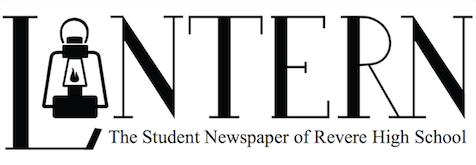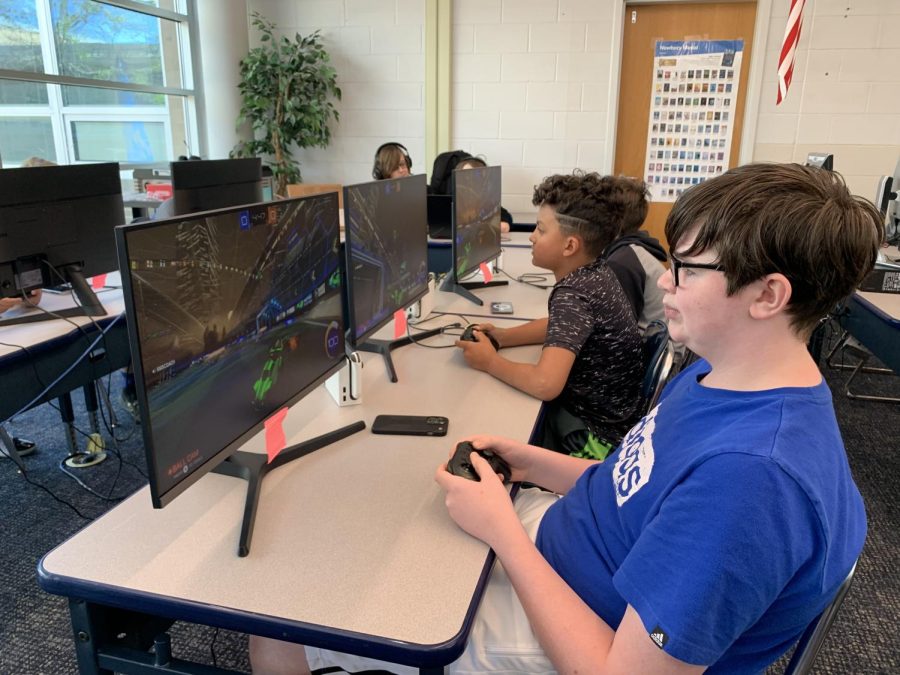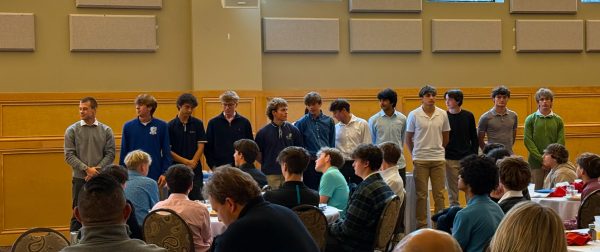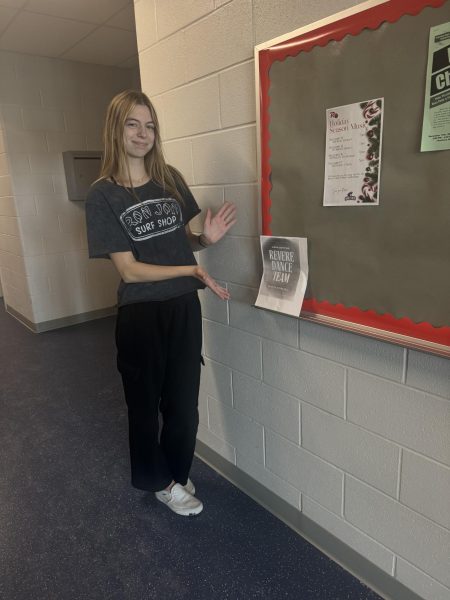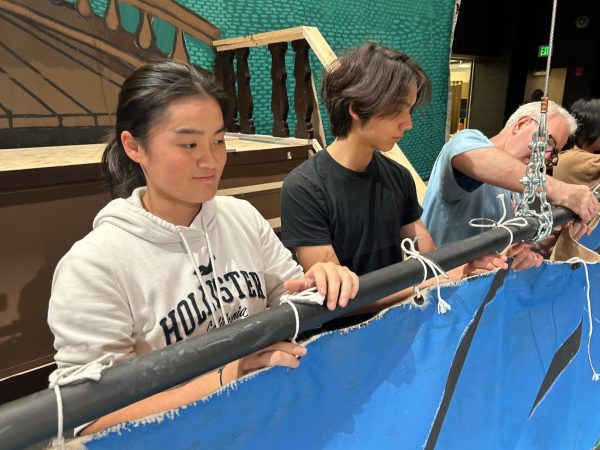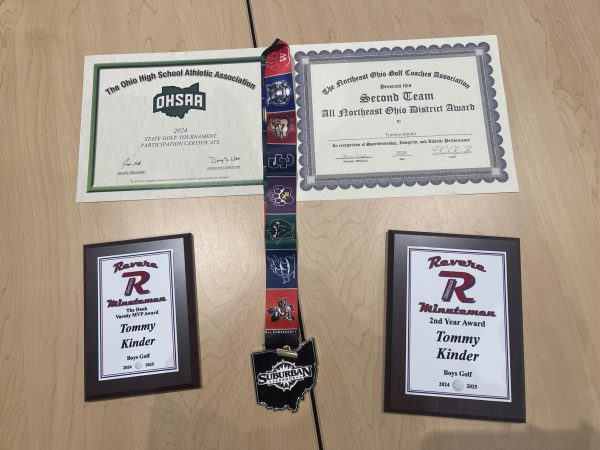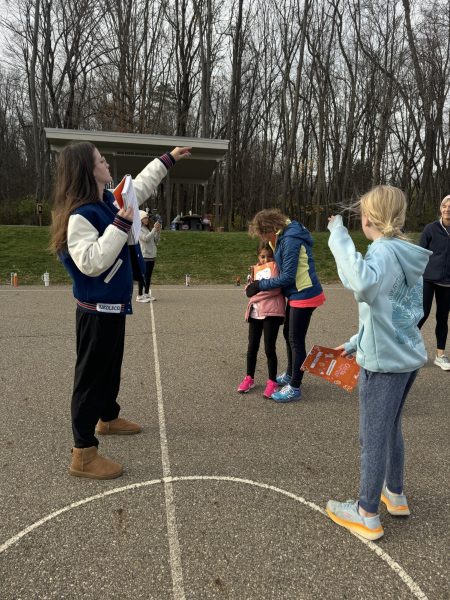RMS adds eSports program
The varsity Rocket Leauge team faces off in the state semi-finals.
On Tuesday, May 17, middle school students gathered around a table and began warm-ups. It was a big day. A victory would guarantee them a spot in the state championship finals.
Two other students grabbed a microphone and a laptop and began live-streaming the event. “Today, we will be facing New London in the state semi-finals,” they echoed into the microphone.
But as the clock counted down to one, the students did not get out of their seats. They instead picked up their controllers and began the match.
This spring, Revere Middle School added a new sport to its roster: eSports.
As the role of technology continues to grow, eSports has emerged as an alternative to traditional physical sports. As someone who studies the growth and immersion of new technology, Theresa Whyte is one of two instructional and technology integration coaches, or simply tech coaches, in the Revere district. Whyte typically focuses more on technology within the high school and middle school, while fellow tech coach Joyce Pushpak focuses on the elementary schools. Whyte explained how the idea of an eSports program at Revere emerged.
“After attending a conference about eSports, [Pushpak] came back with the idea to write a grant to start a team here. There are tons of scholarships at the collegiate level, and there are college students who are going on, some of them are even going pro. They’re being paid for these competitions and winning all kinds of money,” Whyte said.
To many, the idea of video games being considered a sport seems foreign. Whyte recalled her original concerns about eSports and how she realized the benefits they provide.
“At first, [we wondered, are] kids just going to sit around and play video games? Don’t they do that at home all the time? How is this different? But there are some really interesting books out [that discussed] bringing eSports into the ELA curriculum,” Whyte said.
Upon researching the impact of eSports, Whyte learned that the program would provide unique skills that are becoming increasingly popular in the job market.
“You’ve got a whole side that looks at PR for marketing shoutcasting, which is like the color commentary that you would find in sports. Then you have the whole communications aspects of organizing the teams, organizing the competitions,” Whyte said.
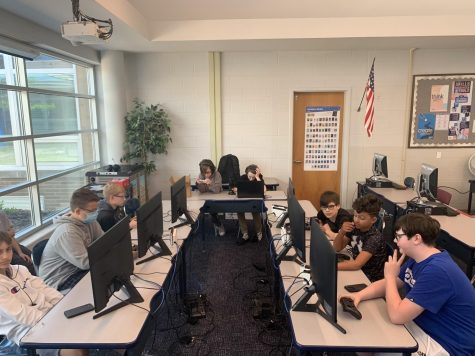
Aside from the actual skill that goes into winning the game, the program provides additional opportunities for other students.
“There are tons of leadership opportunities for students. There are a lot of people involved besides the ones who are at the control or playing the game, so that was really interesting to see how big that range really is. I can see a lot of kids [participating] who are not really into playing the game but are into the commentary, strategy or organization,” Whyte said.
Aside from high schools and middle schools taking up eSports programs, many universities are also creating programs to encourage students. Whyte continued discussing the skills involved with eSports.
“Computer wise, tech wise, there are a lot of skills too. We’re just seeing the surface where people are just playing the games. [There are] a lot of universities [including] one in southern Ohio, Shawnee [State University], which have huge programs for students who are interested in designing video games. You can actually graduate from Shawnee with a degree in video games,” Whyte said.
After realizing the benefits of an eSports process, Whyte and Pushpak began the process of introducing the idea to the schools. Although the idea was widely accepted, the biggest struggle came down to finding a coach. Ultimately, the district found Andrew Edwards, a software developer who heard about the position through his wife Shannon Edwards, who teaches first grade at Richfield Elementary School. Andrew Edwards explained the rush after receiving the position.
“I had just accepted the position two weeks before and was pushing because the deadlines to sign up for the spring were coming up. And I [said], ‘guys, let’s get this going.’ We had tryouts, and then the season started all within like a week period,” he said.
Currently, the middle school team competes in two of the six available eSports games. In the future, Edwards hopes to expand the number of available games, thus increasing the opportunities for students.
“I would love to get more if not all of the games are supported play, which will have more kids, and we had 50, 55 [kids] coming up for tryouts, and I could only take 26 of them; it was stressful,” Edwards said.
Based on the resources and time available, Edwards decided on two games to offer.
“Based [on] the number of people we had, the amount of equipment we had and how our registration for the league worked, we decided on two games, which are fairly popular. We have Rocket League—it’s car soccer—and Super Smash Bros,” Edwards said.
Throughout the state of Ohio, eSports is regulated and hosted through the eSports Ohio organization. The organization hosts a league, allowing competitions to easily be set up.
“It is set up through what’s called eSports Ohio, [which] is a collection of schools that all had eSports programs that decided to get some kind of competition started. We compete against other middle schools from across Ohio,” Edwards said.
As the popularity of eSports continues to rise, more benefits are coming into fruition. Edwards further described the importance of having an eSports program.
“The whole basis for the grant and the importance of eSports in general is providing an outlet and activity competition for kids that don’t necessarily fit in or have a different output for that. You have kids that love and go play baseball, that love and do football, and then you have kids that don’t do those or can’t participate for whatever reason, but they liked video games. [This] is another activity and opportunity for kids to have something to do, meet in, play and to compete,” Edwards said.
Sixth graders Cadence Buckner and Marco Geise joined the eSports team this spring after hearing about it. In addition to being members of the eSports team, Geise plays football and baseball, and Buckner plays basketball, football and baseball. Both agreed that the biggest difference between eSports and their other sports is the online aspect.
“The eSports are online and it’s fun, [they’re] not as competitive [as other sports],” Geise said.
Both Geise and Buckner have played video games as a hobby for many years and were excited to join the team.
“I’ve been playing since I was five, so pretty much my whole life, so it was exciting, and it was pretty cool [that the middle school started an eSports team],” Geise said.
When competing against other schools, the teams typically follow a best of five pattern. Buckner explained the format of both the schedule of practices and games.
“There are usually games, unless it’s a bi-week. Practice is on Tuesday from 3:00 to 4:30 pm. You just practice unless you have a game. For the games, you do best of five. Each match is like five minutes [long],” Buckner said.
Aside from using the sport as an outlet, talent in the game can provide scholarships and additional collegiate opportunities, even at nearby universities such as the University of Akron.
“Akron has a great eSports program. They offer scholarships, sometimes like a full ride to play the games. Not to mention, they offer a good education. That would be a great opportunity for some,” Edwards said.
Originally, the eSports team was supposed to begin at the high school, but challenges with resources and space resulted in the program starting at the middle school. Whyte explained the conflict and its resolution.
“It had to do with resources. We have a grant from the GAR [Foundation] that was originally written for the high school. However, in trying to work out the details of actually making it come to fruition, the middle school had space and was able to allocate it, [unlike the high school],” Whyte said.
Andrew Edwards fears that one of the contributing factors to the program’s move to the middle school was the stigma surrounding eSports.
“The whole program was initially started with the intent of going into high school, but I think through a lot of politicking, and a misunderstanding of the sports, a resistance to video games, perhaps, it eventually [got] bumped down to [RMS,]” he said.
Andrew Edwards hopes the success at the middle school will help correct the negative connotation surrounding video games.
“I want to try and get rid of the stigma of video games being a bad influence. I think it’s an opportunity for kids to get out and express themselves in different ways,” he said.
Currently, the program has sixth, seventh and eighth graders and no immediate plans to expand to the high school.
“We do have eighth-graders. This will be their last season, and then they won’t have it next year. That’s disappointing to say the least,” he said.
Although the program could not be instated at the high school level this year, beginning at the middle school did provide some benefits.
“It was good for us timing-wise because we are attempting to participate with the organization called eSports Ohio [where] middle school eSports teams are a pilot this year. Because it’s a first-year for us too, we figured we might as well be new with everybody,” Whyte said.
Additionally, the interest at the middle school level was at an optimal level for starting a new program.
“The middle school was also, in a student way, a [great] place to start. [At the High School], although there was huge interest, I want to say there were like 100 respondents to the survey saying they would want to be on the team up here, [the middle school has a balance in the number of students]. I do see the potential for it coming [to the High School]. But then, [we have to think if we] can run 180 students on a team. How would we manage that?” Whyte said.
Since the interest is so high, administrators worry that students will be cut from the team to maintain a feasible amount of participants. Starting the program at the middle school level helps ease the pressure and give students more opportunities.
“This way, you have an opportunity to serve as a sixth grader. The program will build with that first year, and you don’t have to worry so much about cutting people. It seemed like a more practical way,” Whyte said.
Although Edwards hopes the program will expand into the other buildings soon, right now, he is focusing on the upcoming state championships.
“[Our main goal] this season is pretty straightforward—we’re hoping to win the championships. After that, it would just be about expanding the program, getting more equipment, extending to the high school and possibly getting some other coaches. That would help alleviate some of the stuff that I do so that we can do more,” Edwards said.
On May 19, the RMS eSports team won the Super Smash Bros state match, becoming the Super Smash Bros state champions. Although the Rocket League team fell short in the state finals, overall, both teams had extremely successful seasons. To see the Minutemen play, head to www.twitch.tv/revereminutemen
